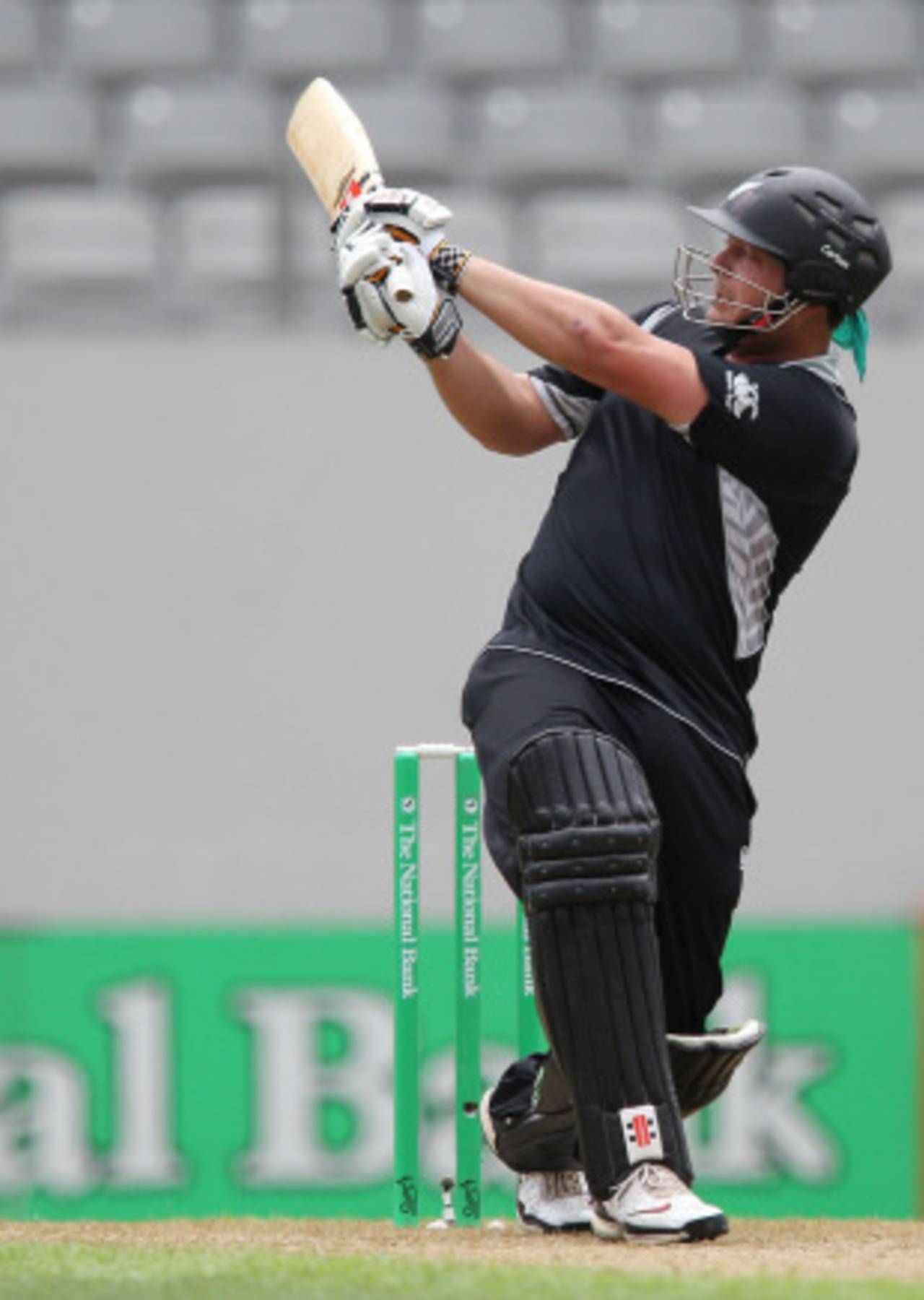Anyone who has been to the Eagle pub in Cambridge, England is likely to have been regaled with the tale of how scientist Francis Crick strolled in at lunchtime on February 28, 1953 to announce he and James Watson had "discovered the secret of life" after coming up with their proposal for the structure of DNA, one of the most important discoveries in human history. That is the sort of miracle solution, of the cricketing variety, which New Zealand fans are seeking.
They want new coach John Wright to assume the role of Crick by waving his magic mentoring wand and saying: "This is how we improve the team's performance." However,
11 straight one-day losses on the subcontinent, followed by three more in the six-match
home series against Pakistan indicate the solution is anything but simple. The most recent loss in Hamilton even saw skipper Daniel Vettori lock the team in the dressing room for a 90-minute post-match vigil to ascertain where the problems lie. No white smoke puffed through the chimney afterwards, but they picked up their act to win the final one-dayer of the series in Auckland.
Unfortunately, those working in the New Zealand selection laboratory looked vulnerable during the Pakistan series, as varying combinations of player ingredients were mixed and matched - a dash of Brendon McCullum here, a dollop of Jesse Ryder there. With one match in the series washed out, another couple over quickly and an injured skipper for the last two, it seems work still needs to be done to perfect the first XI recipe. There has been turbulence behind the facade of rotation and Wright and Vettori have disagreed with the selectors at times. Much needs to unify if New Zealand are to come anywhere near semi-final contention for a
sixth time in 10 World Cups.
The current spate of losses is significant on a wider scale, too. Crowd numbers were down this season; Pakistan are notorious for poor ratings but it is the long-term impact on the so-called 'summer game' that is of greater concern. How much more cricketing mediocrity can the public take? The sport has survived grim patches in the past, but the rise of Twenty20 cricket and the age of the freelance cricketer could ironically eradicate what it is trying to enhance in New Zealand. Players will be better paid but they will largely work offshore. That is fine for the individual, but cricket's place in the nation's social fabric could be diluted. Strong performances by the national side over the next few weeks would shore up the slide.
Paradoxically, the area where New Zealand have the most potential talent is where they have struggled lately; the top-order batting. The top-six combination that played the
final one-dayer against Pakistan should be the one used - fitness permitting - in the World Cup.
New Zealands' performances on the sport's biggest limited-overs stage have been fickle on the subcontinent. Batsmen struggle to play quality spin bowling, adapt to reverse-swing, or adjust to sustained periods of batting or fielding in the climate.
New Zealand's best chance of progressing to the semi-finals in Asia for the first time means opening with Martin Guptill and Brendon McCullum, using Jesse Ryder and Ross Taylor at No. 3 and No. 4, then consolidating with James Franklin and Scott Styris. That leaves Vettori to slap the ball around later, while Jacob Oram, Nathan McCullum and, in theory, a remaining senior batsman, hit out at the death.
An order like that makes sense. Guptill was New Zealand's most consistent top-order batsman during the Pakistan series, tempering any rash instincts to return 40 not out, 39, 21, 65 and 44 - a creditable performance as an opener.
McCullum seemed wasted at Nos. 5,6 and 7 in his first three bats. Returning to the top at least guarantees him facing a decent number of deliveries, if he needs them. Ryder - should the mood strike him - is potentially New Zealand's most devastating batsman, even more than Taylor because of the diversity of his shot selection. Taylor has been reliant on hitting across the line through cow corner, but did turn that around with some crisp offside play in his 69 during the loss in the
fifth ODI against Pakistan.
New Zealands' best totals are often anchored by Ryder. Just look at his 107 off 93 balls to help win the
final match against Pakistan. His timing was perfect - he could have been belting a tennis ball at the beach, such was his nonchalance.
Franklin and Styris then provide the means to consolidate. Hopefully, they will come in in situations when they are not required to hit out straight away, but are given time to compile an innings while a decent striker remains at the other end. There is evidence to back this wishful thinking. Franklin has scored half-centuries in three of his last
six innings, all from the No. 6 position, while Styris' finest performance in recent memory was his
49 not out at No. 7, after being recalled to the side for the series against Australia last year (which included the
headbutting fiasco with Mitchell Johnson). He revels in pugnacious circumstances.
That order should offer New Zealand the best chance of batting success. If they continue to fail, then, much like Crick's DNA strands, they will unravel - and the game's support-base in New Zealand could disintegrate more than ever before.
